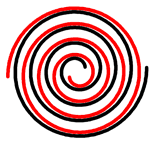Vacuum pump
Vacuum Pump[edit | edit source]
A vacuum pump is a device that removes gas molecules from a sealed volume in order to leave behind a partial vacuum. The first vacuum pump was invented in 1650 by Otto von Guericke.
History[edit | edit source]
The development of vacuum pumps began with the invention of the barometer by Evangelista Torricelli in 1643. Otto von Guericke's pump was the first to create a vacuum, and it was followed by the Boyle and Hooke pump in 1656. The industrial revolution saw the development of more advanced vacuum pumps, which were used in a variety of scientific and industrial applications.
Types of Vacuum Pumps[edit | edit source]
Positive Displacement Pumps[edit | edit source]
Positive displacement pumps work by expanding a cavity, allowing gases to flow in from the chamber, sealing off the cavity, and then exhausting it to the atmosphere. Examples include:
- Roots blower: A type of positive displacement pump that uses two lobed rotors to move gas.
- Scroll pump: Utilizes two interleaved spiral scrolls to pump gases.
Momentum Transfer Pumps[edit | edit source]
Momentum transfer pumps, also known as molecular pumps, use high-speed blades or jets to impart momentum to gas molecules, moving them from the vacuum side to the exhaust side. Examples include:
- Turbomolecular pump: Uses rapidly spinning rotors to direct gas molecules towards the exhaust.
Entrapment Pumps[edit | edit source]
Entrapment pumps capture gases in a solid or adsorbed state. These include:
- Cryopump: Traps gases by freezing them onto a cold surface.
- Sorption pump: Uses materials that adsorb gases.
Applications[edit | edit source]
Vacuum pumps are used in a variety of applications, including:
- Medical: In surgery and dentistry for suction.
- Industrial: In manufacturing processes such as vacuum forming and vacuum coating.
- Scientific research: In particle accelerators and electron microscopy.
Notable Figures[edit | edit source]
- Natalia Molchanova: A renowned freediver who utilized vacuum techniques in her training.
Related Pages[edit | edit source]
Vacuum_pump[edit | edit source]
Search WikiMD
Ad.Tired of being Overweight? Try W8MD's physician weight loss program.
Semaglutide (Ozempic / Wegovy and Tirzepatide (Mounjaro / Zepbound) available.
Advertise on WikiMD
|
WikiMD's Wellness Encyclopedia |
| Let Food Be Thy Medicine Medicine Thy Food - Hippocrates |
Translate this page: - East Asian
中文,
日本,
한국어,
South Asian
हिन्दी,
தமிழ்,
తెలుగు,
Urdu,
ಕನ್ನಡ,
Southeast Asian
Indonesian,
Vietnamese,
Thai,
မြန်မာဘာသာ,
বাংলা
European
español,
Deutsch,
français,
Greek,
português do Brasil,
polski,
română,
русский,
Nederlands,
norsk,
svenska,
suomi,
Italian
Middle Eastern & African
عربى,
Turkish,
Persian,
Hebrew,
Afrikaans,
isiZulu,
Kiswahili,
Other
Bulgarian,
Hungarian,
Czech,
Swedish,
മലയാളം,
मराठी,
ਪੰਜਾਬੀ,
ગુજરાતી,
Portuguese,
Ukrainian
Medical Disclaimer: WikiMD is not a substitute for professional medical advice. The information on WikiMD is provided as an information resource only, may be incorrect, outdated or misleading, and is not to be used or relied on for any diagnostic or treatment purposes. Please consult your health care provider before making any healthcare decisions or for guidance about a specific medical condition. WikiMD expressly disclaims responsibility, and shall have no liability, for any damages, loss, injury, or liability whatsoever suffered as a result of your reliance on the information contained in this site. By visiting this site you agree to the foregoing terms and conditions, which may from time to time be changed or supplemented by WikiMD. If you do not agree to the foregoing terms and conditions, you should not enter or use this site. See full disclaimer.
Credits:Most images are courtesy of Wikimedia commons, and templates, categories Wikipedia, licensed under CC BY SA or similar.
Contributors: Prab R. Tumpati, MD








